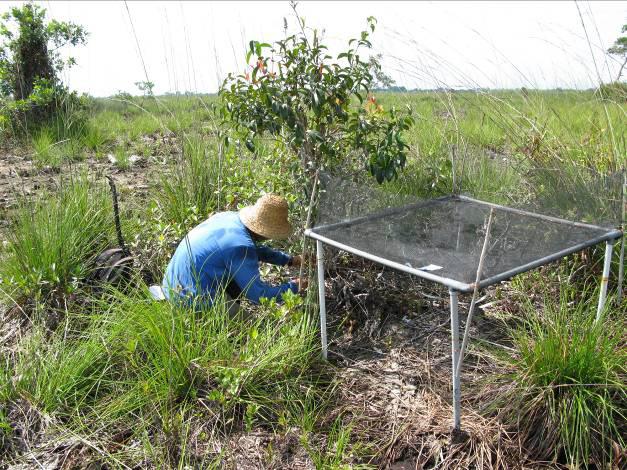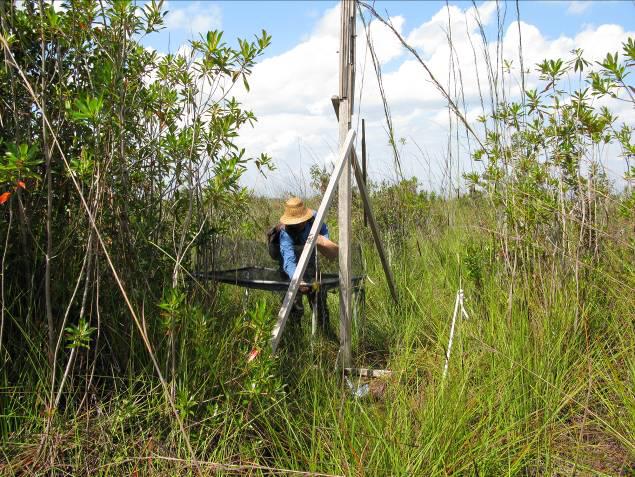Laura Graham
Other projects
9 Oct 2006
The Role of Artificial Bird Perches for Increasing Seed Dispersal in Degraded Tropical Peat Swamp Forest
To determine if providing mycorrhizae inoculations to tree species seedlings can increase the seedlings’ survival and growth rates after transplantation into degraded areas of tropical peat swamp forest.

Control position at 200m from the forest edge; Salahuddin, measuring a seedling in the seedling plot, adjacent to the seed-trap.
South East Asia’s tropical peatlands are essential locally and globally; as a sink for carbon dioxide, maintaining local hydrology and nutrient recycling, and providing livelihoods for local communities. However, in the last 20 years, Indonesia has lost 30% of its tropical peatlands; they have become degraded through drainage, logging and fires, leading to severe drought, further fires and flooding. This prevents natural regeneration, and the benefits of the peatlands are lost. In order to recover these important ecosystems, restoration activities are underway.

Research assistant, Salahuddin, collecting seeds and bird-faeces from seed-fall traps at perch position, 50m from forest edge.
One option is through seedling transplants, however, the degraded area the seedlings are planted into are often under extreme environmental conditions, such as low nutrients, drought and high disturbance, and as a consequence seedling growth rates are low, and mortality high.
Mycorrhizae are a soil-fungi that form a symbiosis with plant roots, and in return for sugars produced by the plant the mycorrhizae provide additional nutrients and water. The relationship between a given plant and a given mycorrhizae species is complex and often species-specific, and the relationship under non-natural conditions must be cultivated.
This study is investigating whether, through inoculating seedlings with their corresponding mycorrhizae species, if this can increase the seedlings’ growth and survival rates once they are transplanted into Indonesia’s degraded tropical peatlands. The study is focussing on two tree species, both important in restoration activities: Shorea balangeran and Dyera polyphylla. 800 seedlings of each species were cultivated in a seedling nursery, and 400 of each species were inoculated with their corresponding mycorrhizae species, 400 left as the control. After 6 months, the seedlings were then transplanted into seedlings plots, along 5 different transects – each transect representing a different level of forest degradation, from primary forest, to forest edge, to severely degraded. The seedlings height, basal diameter and leaf number is recorded month.
During the peak wet season and peak dry season, seedlings samples will be collected; the roots will be analysed to determine percentage of mycorrhizae colonisation, and the shoots for percentage of nitrogen and phosphorus. These results will show the natural level of available mycorrhizae at each forest zone/degradation level, whether inoculation raises this colonisation level, and whether this increased colonisation level impacts positively on growth rates, survival rates and nutrient up-take.
The results from this study can be directly applied – if the data is found to be positive, this then offers a solution to increasing seedling transplant success in tropical peatland restoration activities.